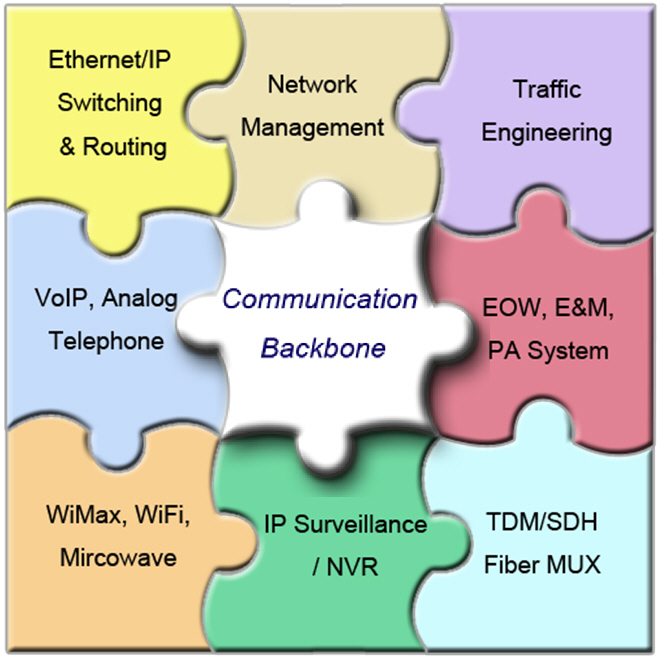Complete Turn-Key Services
We are a system design and integration house with many years of telecommunications and data communications experience. We are capable of performing a complete turn key contract for telecommunications by ourselves. In a normal turn-key contract, the following describes briefly what we offer, or what is within the general scope of work for us when performing these contracts:

- During the initial stage, customers come to us with their project requirements, and we will review whatever on hand and provide our view on the suitable technology and products that will meet the requirements. We can also perform a formal FEED, Front End Engineering & Design to explore further on the available technology and products which are applicable to achieve the goals for reliability and flexibility.
- After the proper technology and products are selected, we can quickly put together a communication block diagram showing the scope of work, backbone, interfaces that are mandatory for meeting or exceeding the tender specifications. With that, a BOM can be generated, and a quotation is derived. In the meantime, if a technical write-up or proposal is needed to describe the design concept, capacity and advantages of the design, it can be written.
- In the detailed design phase after the contract has been awarded to our customers, we will start the engineering work. This is also the time most of the documentation is prepared for review and approval processes with the Consultants.
- Before our delivery to our customers, we will perform integration work on the equipments from various manufacturers in our Taipei facility first. This is also the time that we start to generate the test plans for FAT and IFAT. Basically, all test plans will be executed at least once in our facility successfully before the products are shipped to the location for final IFAT with control equipment.
- During the IFAT, we will send a team over to help commission the network in the IFAT facility with the control people; and to prepare the IFAT before hand, so that a successful IFAT can always be expected.
- Installations and commissioning at sites are executed after all fiber cable installation is complete, and OTDR measurements are done by other contractors. We will dispatch a team for the installation and commissioning of our equipment as soon as the site facility is prepared.
- Last but not least, customer training on site is also available and this is focused on the Operation and Maintenance aspects of the network. At the end of the training, we expect they will be fully independent in performing the 1st level technical support functions which is clearly defined in the OMIM.
Solution : Piecing the Puzzles

- Communications are not very easy to understand to most of the people. Of course, in the cases where Consultants are engaged by the end users, the technical requirements or specifications are most likely fairly professional. But, in the cases Consultants are not involved, the technical requirements or specifications are often very vague. We have seen cases with both flavors.
- In any of the projects we design, the first thing we’ll do is to determine the most suitable technology for the backbone. In short, there are only 2 choices when it comes to the backbone technology, TDM or Ethernet/IP. TDM systems, such as SDH, SONET, E1, T1, are traditional communications technology based on Time Division. TDM systems have been the foundation for all telecommunications systems for the last 80+ years, when the main purpose of the telecom system is to deliver “human voices” or in today’s sense, narrow band services. The characteristics of a Voice network are low speed, small volume of data.
- The development and deployment of Ethernet/IP technology has grown exponentially over the last few years due to the extreme flexibility for dealing with different topologies and the capability to handle large volume of data with very high speed. With the VoIP technology maturing, Ethernet/IP has become the technology of choice for almost all networks nowadays. Of course, the low cost of Ethernet/IP products, to own and to operate, is another giant advantage over SDH systems with similar bandwidth.
- Once the backbone technology is chosen, then the rest of the project requirements shall be considered piece at a time until the total picture is put together. Much like, solving a puzzle.